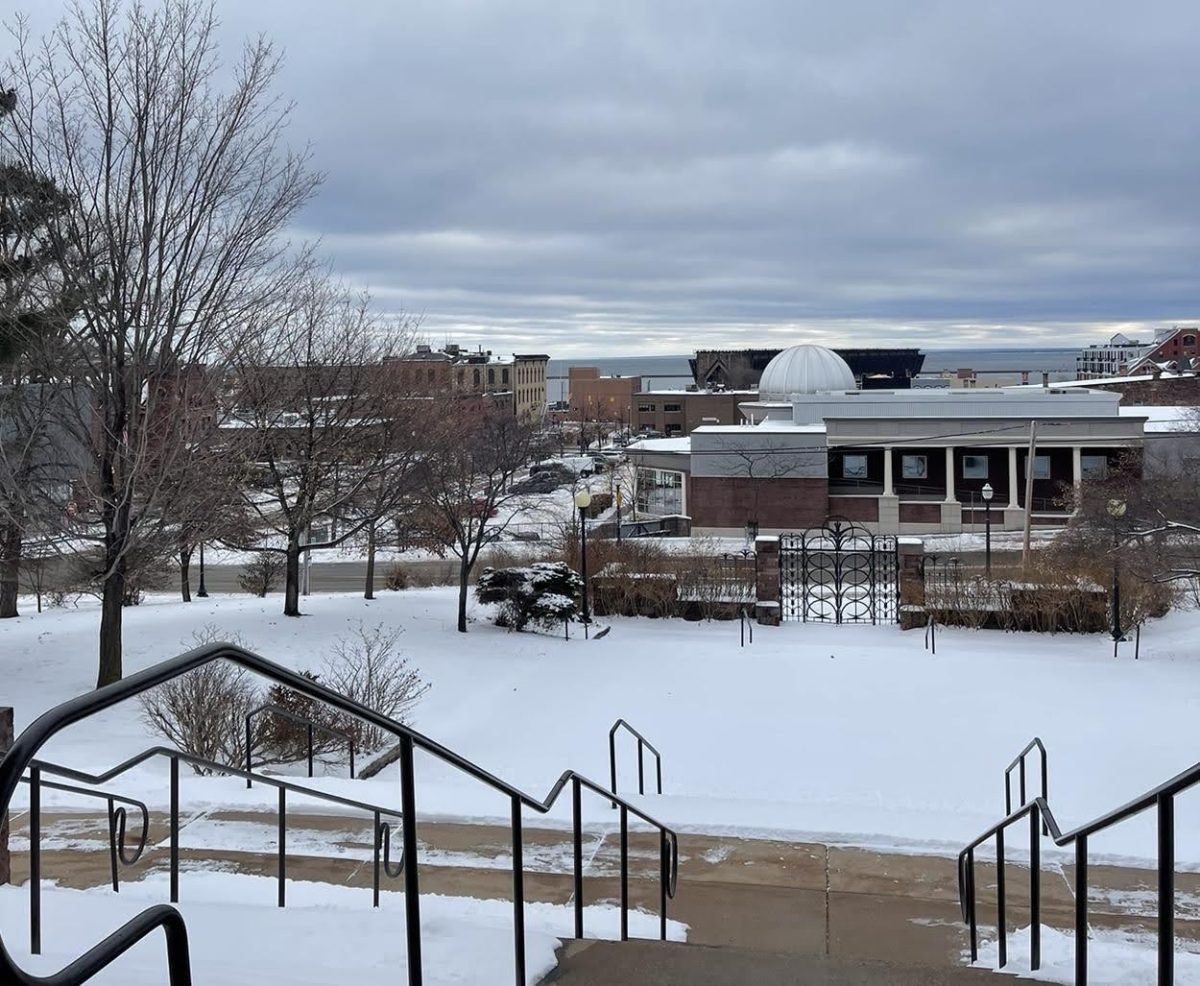The value of the Great Lakes to Michigan’s economic future and the recently signed Great Lakes Pacts were the main topics at the Great Lakes Politics and Policy Symposium held Oct. 3 in the Reynolds Recital Hall.
“It’s been said that fresh water is the oil of the 21st century,” said David Dempsey, author of “Great Lakes for Sale: From Whitecaps to Bottle Caps.” “We have two choices: We use it up for a one-time economic gain, or we invite people to the Great Lakes with regulations and build a sustainable water-based economy.”
In addition to Dempsey, former chairman of the International Joint Commission Tom Baldini and former Michigan Senate Majority Leader Ken Sikkema also spoke.
Each speaker gave a 15-minute presentation on an aspect of the Great Lakes and the Great Lakes Pact, which was signed into law by President Bush only hours before the symposium began.
The pact bans new diversions of water to places outside the region. There are limited exceptions for communities near the basin boundary that meet rigorous requirements and for the taking of water in small containers. The law also allows exceptions in the case of humanitarian disasters.
All three of the speakers praised the Great Lakes Pact, with Baldini and Sikkema both calling it a success and Dempsey referring to the plan as a good starting point. Dempsey said he wishes the Pact did not treat products made with water from the Great Lakes as a tradable commodity.
“The damage may be done,” Dempsey said. “But, there is always the hope that we can go to the legislature and strengthen these policies so that water is no longer a commercial product.”
Baldini spoke on the natural features that make up the Great Lakes Basin – an area encompassing eight states and two Canadian provinces with a combined population of about 40 million. He also put into perspective the importance of the Great Lakes as a natural resource.
“You can all visualize a gallon,” Baldini said. “That represents all the water in the world. Take a tablespoon (of that water); that represents all the fresh water. 18 percent of that tablespoon is in the Great Lakes.”
Sikkema’s presentation focused on Great Lakes Protection efforts he under took as a member of the Senate Conservation Committee and what protection efforts still need to be undertaken.
“Under my watch we came up with a plan for protecting Lake Superior. We came up with over 70 recommendations,” Sikkema said. “I believed back in 2001 – and still believe today – that the biggest threat facing the Great Lakes is biological pollution from non-native species. We have failed to protect this great resource from that threat and something needs to be done.”
After the presentation a question and answer session was held for audience members to inquire the three-person board on important environmental matters.
Many of the audience asked questions directed to the board focused on the highly controversial topic of sulfide mining in the Great Lakes basin and more specifically the proposed Kennecott Mine on the Yellow Dog Plains. Another mining issue that was raised was the proposal of a uranium mine in the Western U.P.
According to audience members a uranium mine would not be under as strict of environmental protection laws as the proposed sulfide mine because uranium falls under the category of a non-ferrous metal, and only the mining of ferrous metals are impacted by recently strengthened environmental laws.
NMU senior environmental science major Phil Herout felt that it was important that the issue of uranium mining was discussed at the forum.
“I feel like it brought a few things to light,” Herout said. “One issue I didn’t know about was the uranium mining, and it is good to get things like that out on the table.”
























